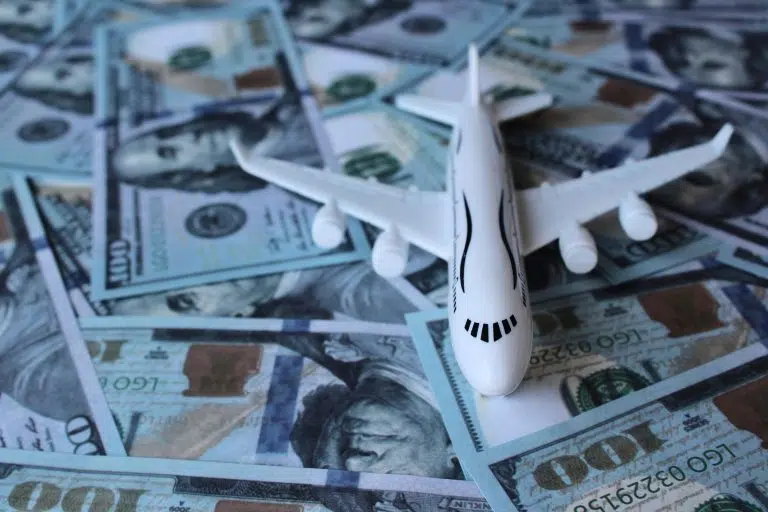Aviation Insurance Premiums Set to Rise in 2025: 2025 has taken a grim turn for global aviation, with over 480 air fatalities reported—marking the deadliest year in over a decade, according to the Virginia-based Flight Safety Foundation. The recent tragic crash of Air India AI 171 near Ahmedabad airport has been the latest in a string of incidents raising deep concern among experts and the aviation community alike. While safety remains the industry’s top priority, this series of disasters has already begun to ripple through the system—in particular, pushing up aviation insurance premiums worldwide.
Aviation insurance, once characterized by relatively stable premiums and minimal volatility, is entering a new and uncertain phase. Industry insiders report that a deadly combination of escalating geopolitical tensions, ongoing conflicts like the Russia-Ukraine war, and the intensifying standoff between Israel and Iran are dramatically raising global risk factors. “Mishaps and war have significantly changed the insurance landscape,” said an aviation executive who requested anonymity. As a result, premiums are poised to rise sharply across both commercial airlines and private aviation segments.
This marks a stark reversal from recent years, when insurers enjoyed a “dream run” of profitability amid low claims and relatively peaceful skies. Now, insurers are recalibrating risks, drawing tighter underwriting policies, and raising prices to buffer against an unpredictable horizon. Not only does this impact airline operators, but passengers and private jet owners may also soon feel the pinch of higher insurance surcharges reflected in ticket pricing and service charges.
Who Can Apply for Aviation Insurance in India
Aviation insurance is a specialized coverage designed to protect aircraft owners, operators, passengers, and crew against losses arising from aviation-related incidents. Those eligible include:
- Commercial airline operators (e.g., Air India, IndiGo, SpiceJet)
- Cargo and charter airlines
- Private aircraft owners
- Helicopter service providers
- Flight schools and training academies
- Government or defense aviation units
- Drone operators (for commercial and government use)
Additionally, passenger-specific travel insurance with aviation accident coverage is available through most insurers, making it accessible for individual travelers and corporate flyers.
Insurance Fees & Premium Trends (2025 Update)
Rising Costs Ahead
With the increased risk environment, aviation insurance premiums in 2025 are expected to rise by 15–40% depending on the type of coverage and operational risk factors.
| Insurance Type | Average Premium (2024) | Projected Increase (2025) | Remarks |
|---|---|---|---|
| Commercial Airline Hull Cover | ₹2.5–₹4 crore/year | ↑ 30% | Based on fleet size and routes |
| Third-Party Liability | ₹50 lakh–₹1.5 crore | ↑ 20% | Higher if flying in war zones |
| Private Jet Cover | ₹20–50 lakh/year | ↑ 15–25% | Risk varies by location & usage |
| Drone Operator Cover | ₹5,000–₹25,000/year | ↑ 10–15% | Coverage includes accidental damage |
| Passenger Travel Add-ons | ₹30–₹150/trip | ↑ 5–10% | Often bundled with travel insurance |
Also read: GST Exemption on Rs 5 Lakh Health Insurance: A Major Relief for Middle-Class Indians
How to Use Aviation Insurance & Its Benefits
What It Covers:
- Aircraft damage or loss
- Injury/death of passengers or crew
- Third-party liabilities
- Airport ground risk
- Hijack, terrorism, or war-related damage
- Loss of revenue during downtime
Benefits:
- Financial protection from catastrophic losses
- Peace of mind for passengers and operators
- Compliance with international regulations
- Access to emergency support and crisis management
- Ability to operate in international airspace confidently
How to Apply for Aviation Insurance in India
Step-by-Step Process:
- Assess Your Needs: Identify the type of aircraft and operations involved.
- Approach Insurance Providers: Choose from reputed firms like TATA AIG, ICICI Lombard, New India Assurance, HDFC ERGO, etc.
- Submit Documentation:
- Aircraft registration certificate
- Airworthiness certificate
- Pilot licenses & experience records
- Past claims history (if applicable)
- Underwriting & Quote: Insurer evaluates risk and provides a premium estimate.
- Policy Issuance: Once payment is made, your coverage is activated.
You can also apply online through most insurers’ official websites or through authorized brokers.

Important Dates to Know (2025)
| Event | Date |
|---|---|
| Expected Premium Hike Effective | July 1, 2025 |
| Next Aviation Risk Review | September 2025 |
| Insurance Council Annual Report | November 2025 |
| Deadline for Policy Renewal (India) | December 31, 2025 |
Disclaimer
This article is for informational purposes only. Insurance premiums and regulations are subject to change based on government directives, market conditions, and insurer policies. Always consult a licensed insurance advisor or company representative before purchasing any aviation-related coverage. Ministry of Civil Aviation
Aviation Insurance Premiums Set to Rise in 2025 Conclusion
Aviation insurance is entering uncharted territory in 2025 as global risks mount. With the year already marked by tragic air accidents and worsening geopolitical tensions, insurers are bracing for higher claims and broader exposure. This will inevitably lead to higher premiums, affecting not just commercial players but even travelers through adjusted ticket prices and surcharges.
Operators must act swiftly to review and renew policies at the earliest to avoid penalties and remain compliant with international standards. The changing insurance landscape also underscores the need for advanced risk mitigation, including technology-based solutions like AI-predicted maintenance and improved pilot training programs.
For passengers, it’s a reminder of the critical safety net that insurance provides during unexpected emergencies. Whether it’s a cross-country business trip or an international vacation, reviewing travel insurance policies for aviation-related coverage is more crucial than ever.
In this challenging year for aviation, financial preparedness is key—and that starts with understanding your insurance rights, liabilities, and benefits.
Aviation Insurance Premiums Set to Rise in 2025 FAQs
1. Why are aviation insurance premiums rising in 2025?
Premiums are rising due to a spike in global aviation accidents, ongoing wars (e.g., Russia-Ukraine, Israel-Iran), and increasing geopolitical risk. Insurance providers are recalculating risks to avoid massive claims, thus increasing policy costs across the board.
2. Will passengers also bear the cost of rising premiums?
Yes, indirectly. While passengers don’t buy hull or liability insurance directly, ticket prices and surcharges may increase as airlines pass on part of the insurance burden to customers. Travel insurance plans may also get pricier
3. Is aviation insurance mandatory for private jets or drones?
Yes. As per IRDAI and DGCA regulations, all aircraft (including private jets and commercial drones) must carry basic insurance coverage. It includes third-party liability and hull cover depending on the aircraft type and use case.
4. Which Indian companies offer aviation insurance?
Several reputed firms offer aviation policies in India:
- TATA AIG
- HDFC ERGO
- New India Assurance
- ICICI Lombard
- Reliance General Insurance
Most also support digital applications and renewals.
5. Can international flights be insured under Indian insurance policies?
Yes, but international flying requires special extensions to standard policies. Aircraft operating globally must comply with both Indian and foreign aviation norms, and insurers typically include international clauses on request at an added premium.




One thought on “Aviation Insurance Premiums Set to Rise in 2025: What Flyers & Airlines Must Know”